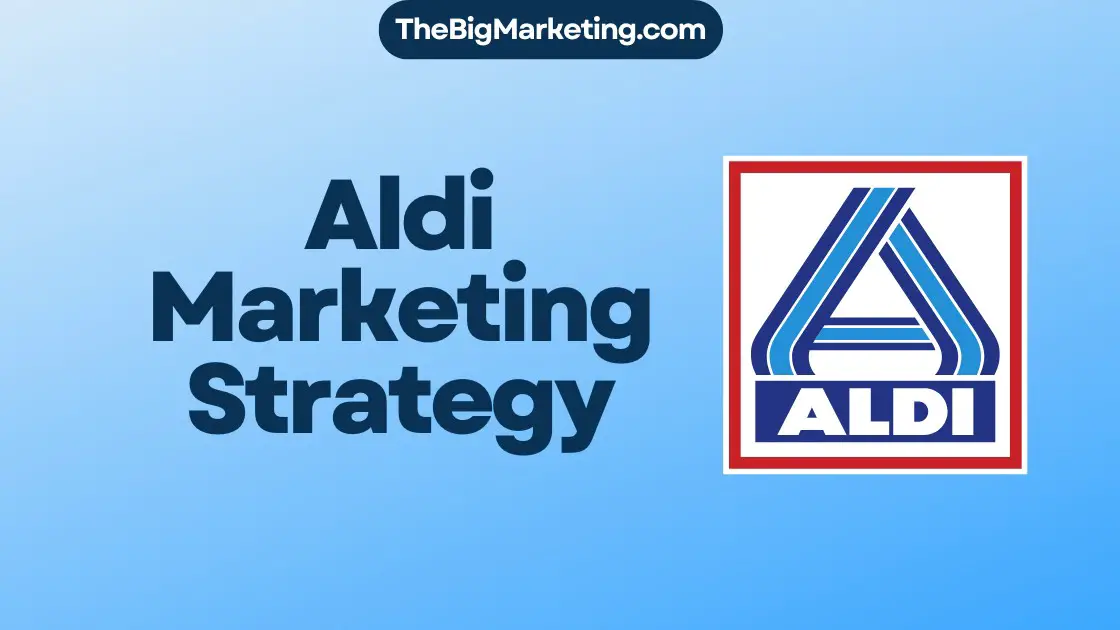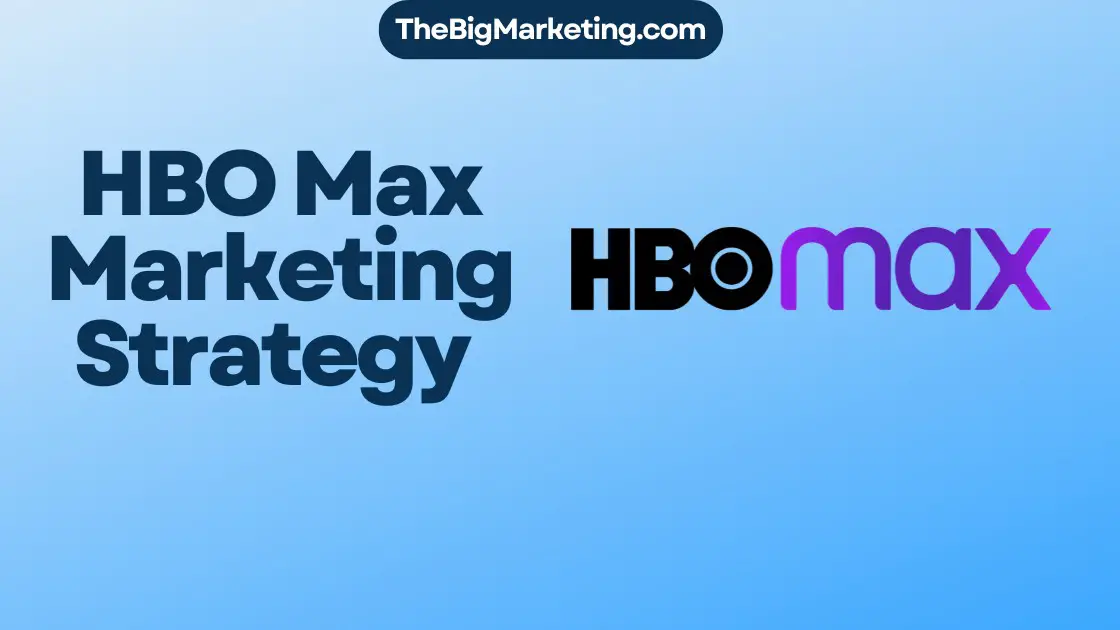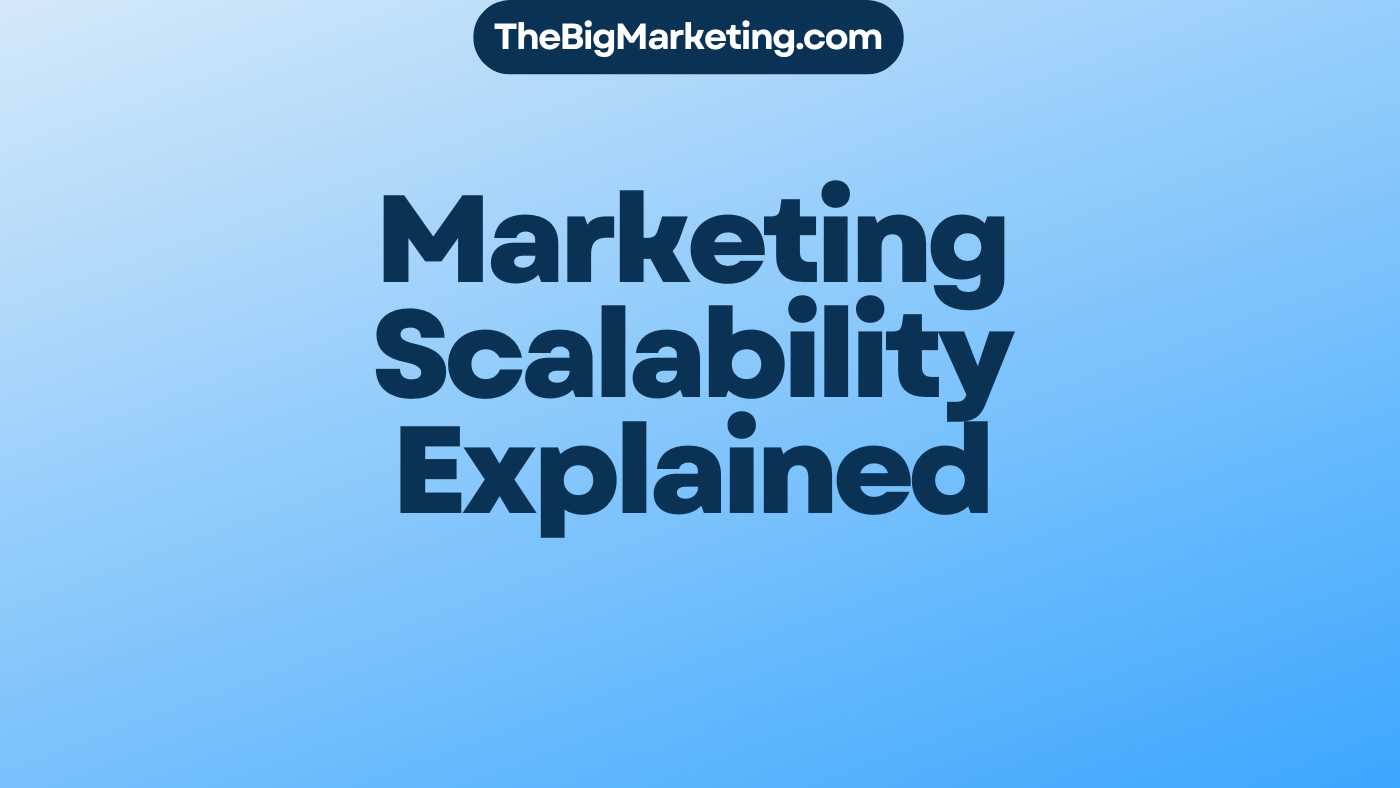The marketing landscape is constantly evolving, driven by technological advancements, changing consumer behaviors, and regulatory changes. To stay relevant and competitive in the tech industry, tech companies need to adopt effective marketing strategies. In this article, we will explore the top marketing trends and strategies for tech companies to implement in 2024.
Key Takeaways:
- Marketing strategies are essential for tech companies to thrive in the ever-changing industry.
- Digital marketing plays a crucial role in promoting tech products and services.
- Effective marketing tactics for tech companies include personalized experiences and innovative ideas.
- B2B tech marketing requires a tailored approach to target business clients.
- Tech startups can benefit from adopting effective marketing strategies from the outset.
AI Marketing Automation
AI-powered marketing tools, such as chatbots and predictive analytics, are revolutionizing the way companies analyze data, personalize experiences, and optimize campaigns. In 2024, AI-powered tools like chatbots, voice search optimization, and predictive analytics will become even more widespread in the tech industry. However, it is important for business leaders to not solely rely on automation strategies but rather adopt a collaborative approach between humans and AI.
Advantages of AI Marketing Automation
- Personalized Customer Experiences: AI-powered chatbots and predictive analytics enable companies to deliver personalized experiences to their customers. By analyzing data and understanding customer preferences, AI can provide tailored recommendations, suggestions, and solutions.
- Optimize Campaigns: AI algorithms can analyze large volumes of data to optimize marketing campaigns. By identifying patterns and trends, AI can recommend the best strategies for targeting and engaging with customers, resulting in improved campaign performance and ROI.
- Improved Efficiency: AI marketing automation eliminates manual and repetitive tasks, freeing up human resources to focus on more strategic initiatives. This improves efficiency and allows teams to allocate their time and efforts more effectively.
By leveraging AI marketing automation, tech companies can enhance their marketing efforts, drive customer engagement, and achieve better business outcomes. However, it is essential to maintain a collaborative approach between humans and AI, combining the unique strengths of both to deliver exceptional results.
Augmented Reality (AR) And Virtual Reality (VR)
Immersive technologies like AR and VR are revolutionizing the way tech companies engage with their target audience. In the realm of marketing, AR and VR are rapidly gaining traction, and it is predicted that their impact will continue to grow in 2024. These technologies offer exciting opportunities for businesses to create immersive brand storytelling and provide customers with unforgettable experiences.
One of the ways in which tech companies are leveraging AR and VR is through virtual try-on experiences. For example, e-tailers can enable customers to virtually try on clothing and accessories before making a purchase. This not only enhances the customer experience but also reduces the need for returns and increases customer satisfaction.
Moreover, AR and VR offer unique ways to engage customers by immersing them in brand storytelling. Through interactive experiences, tech companies can transport customers into virtual worlds where they can fully immerse themselves in a brand’s story. This improves brand recall, strengthens brand loyalty, and helps businesses connect with their audience on a deeper level.
To illustrate the power of AR and VR in marketing, let’s take a look at an example:
Case Study: XYZ Furniture
XYZ Furniture, a leading furniture retailer, implemented AR and VR technology to enhance the shopping experience for their customers. By offering virtual room visualizations, customers can see how different pieces of furniture would look and fit in their own homes.
The implementation of AR and VR not only increased engagement and time spent on the website but also led to a significant boost in sales. Customers were able to explore various furniture options and make more informed purchase decisions, resulting in increased customer satisfaction and reduced return rates.
With the success of their AR and VR initiatives, XYZ Furniture established themselves as innovators in the industry and gained a competitive edge.
In summary, AR and VR technologies offer immense potential for tech companies to create captivating brand experiences and engage their target audience in meaningful ways. Whether it’s through virtual try-on experiences or immersive brand storytelling, embracing these technologies can elevate marketing efforts and drive success in the tech industry for years to come.
Hyper-Personalization
As technology continues to advance, tech companies are leveraging AI and machine learning to unlock the power of hyper-personalization in their marketing strategies. By harnessing vast amounts of customer data, businesses can deliver tailored experiences that resonate with individual preferences, driving engagement and conversions.
One of the key aspects of hyper-personalization is curated content, where companies create and deliver relevant content to customers based on their interests, behaviors, and demographics. By understanding the unique needs of their audience, tech companies can provide valuable information, resources, and insights through personalized content, establishing their brand as a trusted authority.
In addition to curated content, hyper-personalization also involves offering personalized recommendations to customers. AI algorithms analyze customer data and buying patterns to generate accurate product recommendations that align with their preferences. This personalized approach enhances the customer experience, increases customer satisfaction, and improves the likelihood of repeat purchases.
To illustrate the effectiveness of hyper-personalization, consider the example of a tech e-commerce platform. By leveraging customer data, AI algorithms can recommend products that closely match the customer’s interests and preferences. This data-driven personalization not only enhances the customer’s shopping experience but also increases the chances of a successful transaction.
Data-Driven Personalization Through AI
The success of hyper-personalization strategies heavily relies on AI and machine learning algorithms. These technologies have the capability to analyze vast volumes of customer data, including past purchases, browsing behavior, demographic information, and social media interactions. By identifying patterns and preferences, AI algorithms can deliver personalized recommendations and curated content that align with individual customer interests.
Furthermore, AI-powered systems can continuously learn and adapt as more data is collected, leading to more accurate recommendations over time. This iterative process allows tech companies to refine their hyper-personalization strategies and provide even more tailored experiences to their customers.
In conclusion, hyper-personalization powered by AI and machine learning is a paramount marketing strategy for tech companies in 2024. By curating personalized content, offering tailored recommendations, and leveraging data-driven insights, businesses can create meaningful connections with their customers and foster long-term loyalty. As the tech industry continues to evolve, hyper-personalization will remain a key differentiator for companies seeking to deliver exceptional and relevant customer experiences.
Influencer Marketing
Modern consumers are increasingly seeking genuine and authentic relationships with influencers. In fact, influencer marketing has become a powerful strategy for tech companies to connect with their target audiences. In 2024, the trend of influencer marketing is set to grow even stronger in the tech industry.
One significant change that we can expect to see is the rise of micro-influencers. These individuals have smaller but highly engaged followings within specific niches. Partnering with micro-influencers can be highly effective for tech companies, as they have the ability to resonate with targeted audiences and foster genuine connections.
Furthermore, the authenticity of the influencer plays a vital role in influencer marketing success. Tech companies should prioritize partnering with influencers who align with their brand values and have a genuine connection to their industry. By cultivating authentic relationships with influencers, tech companies can build trust among their audience and enhance brand credibility.
To illustrate the potential impact of influencer marketing in the tech industry, consider the following statistics:
- 70% of teens on YouTube relate more to YouTubers than traditional celebrities.
- 86% of women use social media for purchasing advice, with 50% relying on product recommendations from influencers.
- 45% of marketers find influencer marketing to be the most effective way to reach and engage their target audiences.
Benefits of Influencer Marketing in the Tech Industry
There are several benefits that tech companies can derive from implementing influencer marketing strategies:
- Reach: Influencers have established audiences, allowing tech companies to reach a wider pool of potential customers.
- Engagement: Influencers possess the ability to engage and connect with their followers on a personal level, making their recommendations more impactful.
- Expertise: Influencers often specialize in specific tech-related topics, making them trusted voices and sources of knowledge for their audience.
- Authenticity: Influencers bring authenticity to brand partnerships, which resonates with modern consumers who value genuine experiences.
In conclusion, influencer marketing offers tech companies a valuable opportunity to build genuine and authentic connections with their target audiences. By leveraging the power of micro-influencers and prioritizing authenticity, tech companies can effectively harness the potential of influencer marketing in 2024 and beyond.
Video Marketing
Video marketing has emerged as a crucial strategy for tech companies to effectively convey their brand messages in a visually engaging and interactive manner. In today’s digital landscape, where attention spans are shorter than ever, short-form videos have become increasingly popular in capturing the interest of audiences.
Short-form videos, typically lasting no more than a few minutes, are concise and compelling, allowing tech companies to deliver impactful messages quickly and efficiently. They are an effective tool for grabbing attention and conveying key information about a product, service, or brand.
Live streaming is another powerful trend in video marketing that tech companies are embracing. With the ability to connect directly with their audience in real-time, companies can leverage live streaming to host product launches, webinars, tutorials, and even behind-the-scenes sneak peeks. The interactive nature of live streaming fosters engagement and builds a sense of authenticity and trust with viewers.
In addition to short-form videos and live streaming, interactive content is also gaining traction in video marketing. By incorporating interactive elements such as quizzes, polls, and clickable calls-to-action, tech companies can actively engage their viewers and encourage them to interact with the content. This not only creates a more immersive and personalized experience but also provides valuable data and insights into audience preferences and behaviors.

Furthermore, video marketing allows tech companies to showcase their brand personality and tell compelling stories. Through strategic visuals, music, and storytelling techniques, videos can evoke emotions and resonate with viewers on a deeper level, leaving a lasting impression.
By leveraging the power of video marketing, tech companies can effectively engage their target audience and convey their brand messages in a dynamic and captivating way. Whether it’s through short-form videos, live streaming, or interactive content, video marketing provides a unique opportunity for tech companies to connect with their audience, build brand awareness, and drive meaningful engagement.
Voice Search Optimization
In today’s digital landscape, voice-activated devices have become increasingly prevalent, with millions of users relying on platforms like Siri, Alexa, and Google Assistant for their daily needs. As a result, optimizing content for voice search has become a critical strategy for tech companies to enhance their online visibility and reach a wider audience.
Voice search optimization involves leveraging conversational language and long-form questions to make content more discoverable and rank higher in voice search results. By catering to the natural language patterns used in voice searches, tech companies can ensure that their content aligns with user intent and provides relevant solutions.
One of the key considerations in voice search optimization is the use of conversational language. When users perform voice searches, they tend to use conversational phrases and natural language patterns rather than typing in concise keyword queries. Therefore, it is essential for tech companies to incorporate conversational language into their content to align with the way people speak and search verbally.
Another crucial aspect of voice search optimization is the utilization of long-form questions. Voice-activated devices are designed to provide comprehensive and contextually relevant answers to user queries. By structuring content in the form of long-form questions, tech companies can increase the likelihood of their content being selected as the featured snippet in voice search results – the concise answer that voice assistants provide.
For example, a tech company selling smart home devices could optimize their content for voice search by incorporating conversational language and long-form questions such as:
- “What are the best voice-activated devices for a smart home?”
- “How do voice-activated devices enhance home automation?”
- “Which voice-activated devices are compatible with popular smart home ecosystems?”
By tailoring content to address common voice search queries, tech companies can position themselves as authoritative sources in their respective industries and capture the attention of voice search users.
In addition to conversational language and long-form questions, there are other best practices to consider when optimizing content for voice search:
- Ensure fast page loading times to accommodate voice search users who expect quick results.
- Focus on providing concise and direct answers that align with user intent.
- Optimize for mobile devices to capture the growing number of voice search users on smartphones and tablets.
- Use structured data markup to help search engines understand and interpret the content more effectively.
By incorporating voice search optimization techniques into their digital marketing strategies, tech companies can stay ahead of the curve and effectively engage with their target audience in the era of voice-activated technology.
Statistics and Market Trends
| Statistic/Trend | Description |
|---|---|
| 1. Growth of voice-activated devices | Voice-activated devices, such as smart speakers, are experiencing rapid growth, with an estimated 4.2 billion devices in use worldwide by 2023. |
| 2. Increasing adoption of voice search | Approximately 55% of households in the United States are expected to own a smart speaker by 2024, leading to a significant increase in voice search usage. |
| 3. Shifting search behavior | By 2025, it is projected that voice searches will account for 50% of all online searches, indicating the growing preference for hands-free and voice-activated search methods. |
| 4. Rise of voice commerce | Voice commerce is on the rise, with consumers increasingly using voice-activated devices to make purchases. It is estimated that voice shopping will reach $40 billion in the United States by 2022. |
| 5. Growing need for voice search optimization | Despite the increasing popularity of voice search, only 4% of businesses have optimized their content for voice search, highlighting the untapped potential for tech companies to gain a competitive advantage. |
User-Generated Content (UGC)
User-generated content (UGC) is a powerful marketing strategy that involves involving customers in content creation. By encouraging users to create and share content related to your brand, you can tap into the power of social proof and enhance your brand credibility. UGC serves as authentic testimonials and recommendations from real users, showcasing the positive experiences they have had with your products or services.
For tech companies, implementing UGC strategies can lead to increased engagement and brand loyalty. By creating opportunities for user participation through contests, challenges, and partnerships with influencers, you can amplify the reach of your brand and foster a sense of community among your audience. UGC not only allows you to showcase the versatility and effectiveness of your products but also strengthens the emotional connection that users have with your brand.
In 2024, UGC will continue to be an effective and authentic way for tech companies to engage with their audience and build trust. By integrating UGC into your marketing efforts, you can create a dynamic and interactive brand experience that resonates with your target market. Through UGC, tech companies can leverage the creativity and enthusiasm of their customers to enhance brand awareness, credibility, and customer engagement.
Benefits of User-Generated Content for Tech Companies
There are several benefits that user-generated content can offer to tech companies:
- Increased engagement: UGC encourages active participation from users and creates a two-way communication channel, leading to higher engagement levels.
- Social proof: UGC serves as social proof, demonstrating to potential customers that your products or services are reliable and meet their needs.
- Content creation: UGC provides a constant stream of fresh and diverse content that can be shared across various channels, saving time and resources on content creation.
- Brand credibility: UGC enhances your brand credibility as it is perceived as genuine and unbiased, coming directly from satisfied customers.
By harnessing the power of UGC, tech companies can create a community-driven brand image, foster greater trust among consumers, and cultivate a loyal customer base.
| UGC Strategies | Examples |
|---|---|
| Social media contests | Encourage users to share their experiences with your products or services on social media using specific hashtags for a chance to win prizes. |
| Influencer partnerships | Collaborate with influencers relevant to your industry to create UGC that showcases your products or services in an authentic way. |
| Customer testimonials | Highlight positive reviews and testimonials from satisfied customers on your website, social media platforms, and other marketing materials. |
| User reviews and ratings | Utilize customer reviews and ratings on your website to provide social proof and assist potential customers in making purchase decisions. |
Social Commerce
Social media platforms are transforming into powerful e-commerce ecosystems, reshaping the way people shop online. This trend is set to continue in 2024, with major platforms like Facebook, Instagram, and TikTok leading the way. By integrating shopping features into their platforms, these social media giants are enhancing the digital shopping experience for users.
One of the key benefits of social commerce is the streamlined shopping journey it offers. Users can discover products seamlessly within their social media feeds, eliminating the need to navigate through multiple websites or applications. This simplicity and convenience make it easier for consumers to explore and purchase products, leading to increased conversion rates for tech companies.
Moreover, social commerce provides enhanced product discovery capabilities. Users can easily stumble upon new and unique products through personalized recommendations and curated content. By leveraging AI algorithms and user data, social media platforms can deliver targeted product suggestions based on individual preferences and browsing behavior.
Additionally, social commerce offers immersive experiences that engage users and build brand loyalty. Tech companies can create interactive product showcases, virtual shopping experiences, and live product demonstrations to captivate their audience. These immersive experiences not only enhance the shopping journey but also foster a stronger connection between consumers and brands.
Last but not least, social proof plays a crucial role in social commerce. User-generated content, such as reviews, ratings, and testimonials, influences purchase decisions and builds trust among consumers. By capitalizing on social proof, tech companies can leverage the power of recommendation and social validation to drive future purchases.
In summary, social commerce is revolutionizing the way people shop online, and it presents significant opportunities for tech companies. Embracing social commerce allows them to tap into the vast user base and engagement on social media platforms, convert audience engagement into sales, and elevate their brand’s presence in the digital landscape.
Privacy and Data Protection
Data privacy and protection are crucial concerns for tech companies in today’s digital landscape. With the increasing amount of personal data being collected, businesses must prioritize consumer trust and implement robust data privacy practices to gain a competitive advantage. To ensure the security and privacy of customer data, tech companies should focus on:
Secure Data Collection and Storage
Tech companies need to adopt secure methods for collecting and storing customer data. This includes implementing encryption, firewalls, and other protective measures to safeguard sensitive information. By taking proactive steps to protect data, companies can build trust with their customers and demonstrate their commitment to data privacy.
Obtaining Explicit Consent
Explicit consent is a critical aspect of data privacy regulations. Tech companies should obtain clear and specific consent from customers before collecting their data. This involves providing transparent information about the purpose of data collection, how it will be used, and any third parties that may have access to the data. By obtaining explicit consent, companies can ensure that customers are aware of and agree to the use of their personal information.
Compliance with Privacy Regulations
Privacy regulations, such as the General Data Protection Regulation (GDPR) and the California Consumer Privacy Act (CCPA), have been introduced to protect consumer privacy rights. Tech companies must ensure compliance with these regulations to avoid legal consequences and uphold their commitment to data protection. By implementing privacy policies, data breach response plans, and other measures, companies can navigate the complexities of privacy regulations and build a reputation as a trustworthy brand.
By prioritizing privacy and data protection, tech companies can not only gain the trust and loyalty of their customers but also strengthen their competitive position in the market. The table below summarizes the key elements of privacy and data protection:
| Key Elements of Privacy and Data Protection |
|---|
| Secure data collection and storage |
| Obtaining explicit consent |
| Compliance with privacy regulations |
Conclusion
In conclusion, effective marketing strategies are crucial for tech companies to thrive in the ever-changing industry. By implementing AI marketing automation, personalized experiences, influencer marketing, and voice search optimization, tech companies can drive their brand’s growth and engagement in 2024.
Embracing the latest trends and leveraging innovative marketing tactics will enable tech companies to build a competitive advantage. Automation tools powered by AI, such as chatbots and predictive analytics, will continue to revolutionize data analysis and campaign optimization.
Additionally, the integration of augmented reality and virtual reality in marketing efforts will enable tech companies to create immersive brand storytelling experiences. Hyper-personalization, influencer marketing, and video marketing are other key strategies that allow tech companies to engage with their target audience on a deeper level.
Moreover, optimizing content for voice search and encouraging user-generated content will further enhance brand visibility and credibility. As privacy and data protection become increasingly important, tech companies must prioritize secure data collection, obtain explicit consent, and comply with privacy regulations to build trust with their customers.
FAQ
What is AI marketing automation?
AI marketing automation refers to the use of artificial intelligence-powered tools, such as chatbots and predictive analytics, to analyze data, personalize experiences, and optimize marketing campaigns.
How can AI-powered chatbots benefit tech companies?
AI-powered chatbots can benefit tech companies by providing instant customer support, handling repetitive tasks, and collecting valuable customer data for further analysis.
What is the role of augmented reality (AR) and virtual reality (VR) in marketing?
AR and VR technologies can be used in strategic marketing efforts to create immersive and interactive experiences, such as virtual try-on experiences, that enhance brand storytelling and engage customers.
How can tech companies leverage hyper-personalization?
Tech companies can leverage hyper-personalization by using AI and machine learning to analyze customer data and deliver tailored content, product recommendations, and offers based on individual preferences.
What is influencer marketing?
Influencer marketing involves partnering with individuals who have a strong online presence and engaged following, known as influencers, to promote products or services and build brand awareness.
What types of influencers are expected to drive the influencer marketing trend in the tech industry?
In 2024, the growth of micro-influencers, who have smaller but highly engaged followings, is expected to drive the influencer marketing trend in the tech industry.
How can tech companies use video marketing effectively?
Tech companies can use video marketing effectively by creating short-form videos, utilizing live streaming platforms, and producing interactive content to engage their target audience and convey brand messages dynamically.
What is voice search optimization?
Voice search optimization involves optimizing content by using conversational language and long-form questions to make it more discoverable and rank higher in voice search results.
How can tech companies encourage user-generated content?
Tech companies can encourage user-generated content by organizing contests, challenges, and partnerships with influencers, which can amplify reach and engagement and enhance their brand credibility through social proof.
How can tech companies leverage social commerce?
Tech companies can leverage social commerce by utilizing social media platforms as e-commerce ecosystems, integrating shopping features, and providing streamlined shopping journeys, immersive experiences, and social proof to drive future purchases.
What should tech companies prioritize in terms of privacy and data protection?
Tech companies should prioritize secure data collection and storage methods, obtain explicit consent from customers for data usage, and ensure compliance with privacy regulations to protect customer data and build a reputation as a trustworthy brand.







